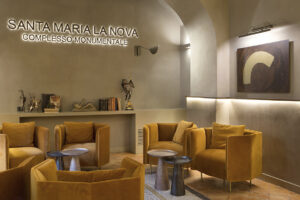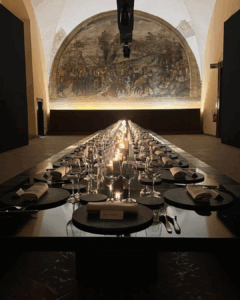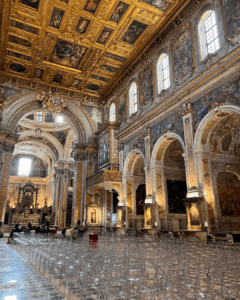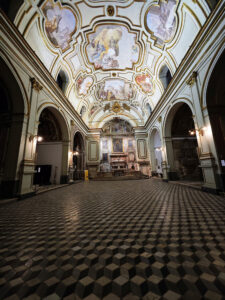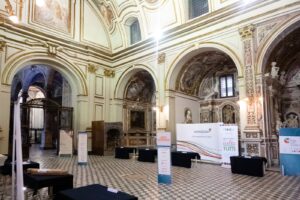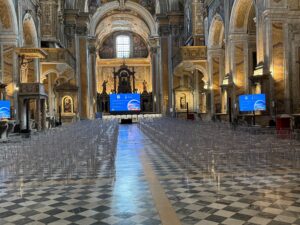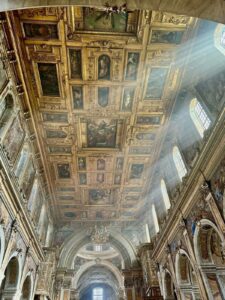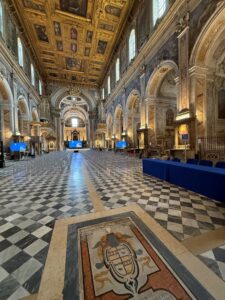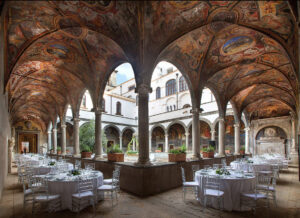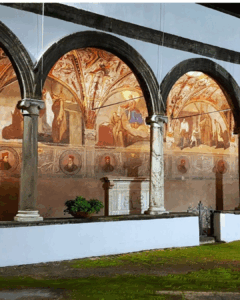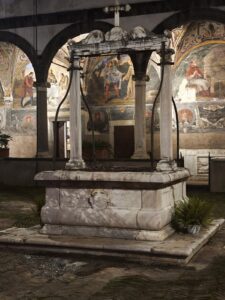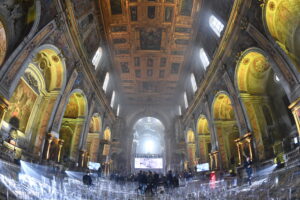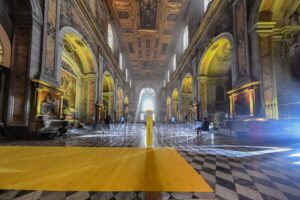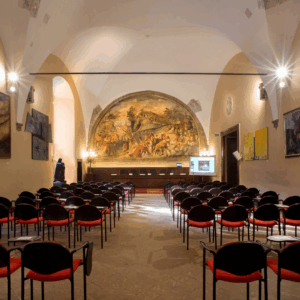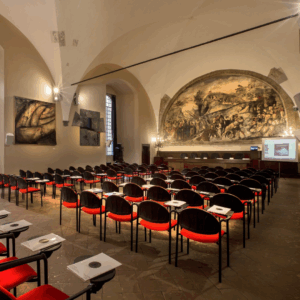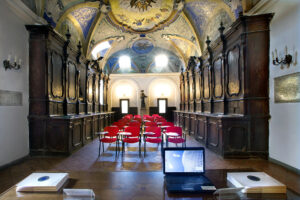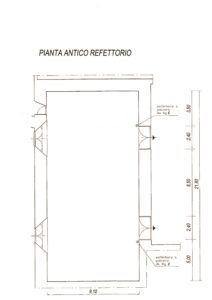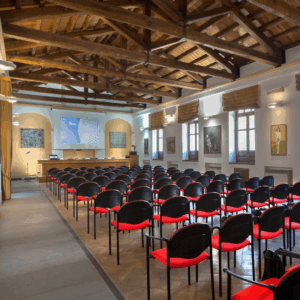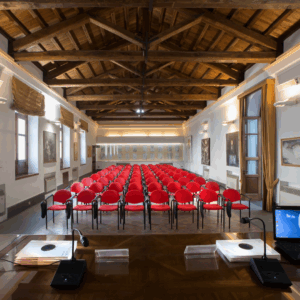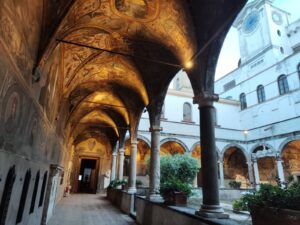COMPLESSO MONUMENTALE SANTA MARIA LA NOVA
PARTNER
The Church of Santa Maria la Nova is called la Nova to distinguish it from that of Santa Maria ad Palatium, dating back to the Swabian period, which stood in the place where the Maschio Angioino was later built and where, since 1216, a convent of minor friars existed which was believed to be founded by St. Francis.
Charles I of Anjou, wanting to build Castel Nuovo, demolished the complex, giving the friars in exchange, on 10 May 1279, the place where the current church is located and on which the ancient Maestra tower stood, guarding the port. The convent was built on the ancient structures and a reminder of the original arrangement is the almost walled appearance that the complex takes on via del Cerriglio with the bell tower erected where the tower probably was, and with a façade struck by a bull frieze, open only by a few very high windows and adorned with a simple statue of St. Anthony of Padua.
Santa Maria la Nova was built in Gothic style, but the architect of its construction is not known. The building in its original appearance was just over three centuries old. Among the causes that led to the demolition of the Angevin church, we must remember the earthquake of 1456 and those of 1538, 1561, 1569 and 1588 but, to a greater extent, the explosion of the powder magazine of Castel S. Elmo, struck by lightning on 13 December 1587 , which seriously damaged it.
The renovation of the church in 1596, attributable in part to Agnolo Franco, was also due to the generous offerings of the faithful followed, furthermore, by a miraculous healing in favor of a poor man crippled from birth, attributed to the Madonna delle Grazie on 17 August 1596. The current facade of the church, with two orders of which the lower one is in exposed piperno, is typical of the type widespread in Naples in the 16th century. It is preceded by a staircase with a marble balustrade; at the top, the portal, flanked by two granite columns, is surmounted by an aedicule, in which the Virgin is depicted, by an unknown sculptor from the first half of the 1600s.
What first catches the visitor's attention at the entrance is the coffered and carved wooden ceiling, decorated in pure gold, made between 1598 and 1603. Among the 46 panels of different sizes embedded in the golden carpentry there are paintings by Curia, Imparato, Santafede, Corenzio, Rodriguez and Malinconico; true anthology of the late Renaissance in Naples.
The main altar was built in 1633 based on a design by Cosimo Fanzago while in front of it on the floor is the tombstone of Giovanna, the wife of Ferrante (Ferdinand I) of Aragon. In the apse the fifteenth century paintings were restored by Corenzio, the wooden choir from 1603 is very beautiful.
In the right transept we notice a panel with a Saint Michael by Marco Pino da Siena and again an Ecce Homo in polychrome wood by Giovanni da Nola, in the following chapel a Nativity in basrelief by Girolamo Santacroce, in the third and fourth chapel still Marco Pino and Giovanni da Nola with a Crucifixion. Followed by the magnificent chapel of S. Giacomo della Marca restored in the sixteenth and seventeenth centuries. Of Annibale Caccavello we point out two beautiful tombs from 1550, those of Odetto di Foix and Pedro Navarro, while the frescoes on the vault are by Stanzione. The third chapel offers the baroque decorations and related marble works by Fanzago, while immediately after there are the frescoes by Giordano.
The two cloisters are part of the Monumental Complex, of which the smaller one, which houses some sepulchral monuments from the church, is frescoed with episodes from the life of S. Giacomo della Marca, traditionally attributed to Simone Papa. The rooms are accessed from the side of the small cloister. of the richly decorated Sacristy and of the Ancient Refectory, embellished with a fresco by Bramantino: The climb to Calvary.
Santa Maria La Nova - Meeting Rooms
| ROOM | CAPACITY |
|---|---|
| Chiesa Monumentale di S. Maria La Nova | 350 seats |
| Cappella di S. Giacomo | 100 seats |
| Sala degli Argenti | 35 seats |
| Sala dell'Antico Refettorio | 150 seats |
| Sala Margherita Caputo | 100 seats |
| Chiostro di S. Giacomo | 150 placée, 200 standing |
- Meeting Rooms: 6
- Capacity (wider area): 350 seats
Website: www.santamarialanova.com
Phone: +39 081.552.15.97


